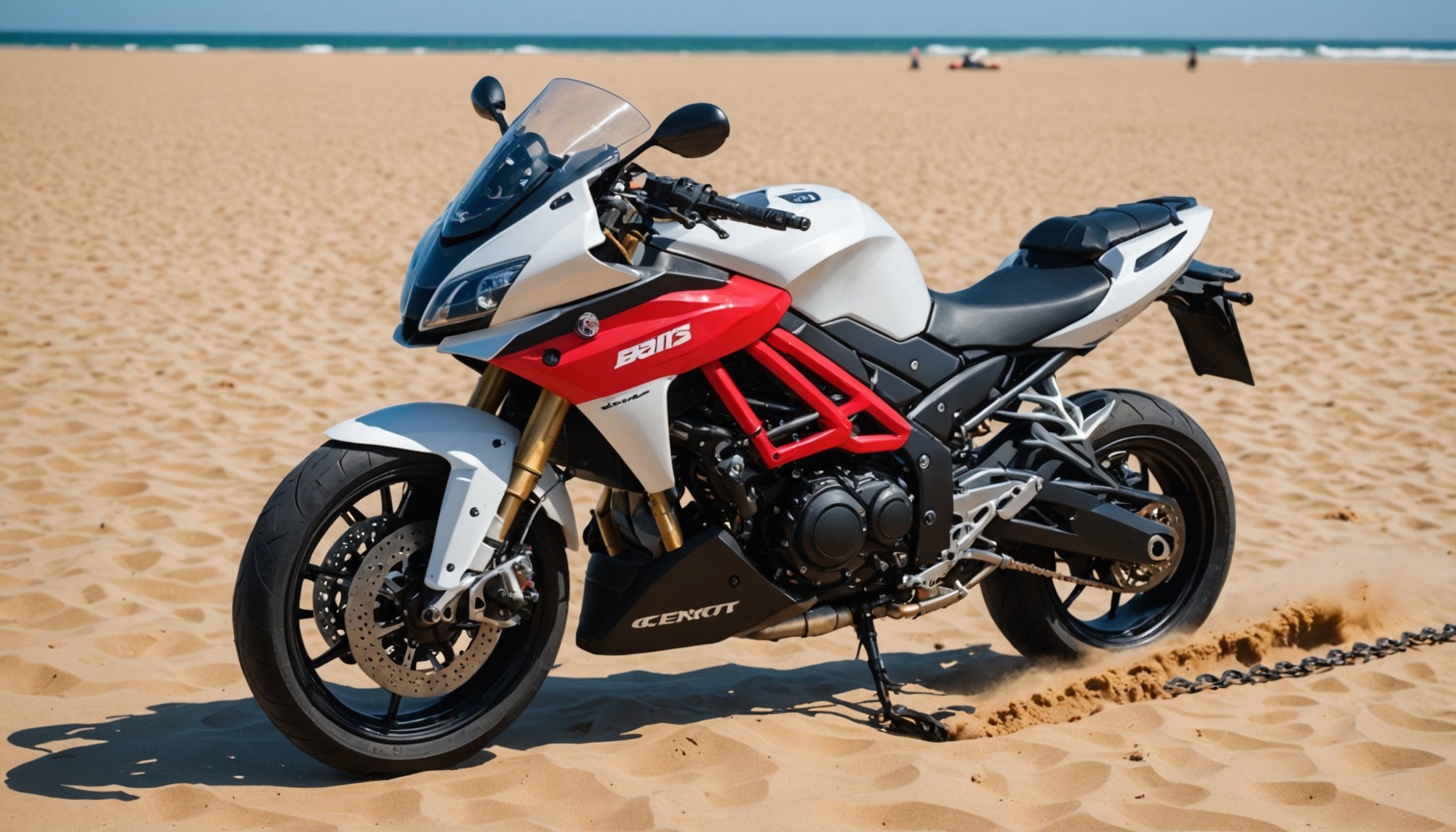Understanding the Risks of Sand Damage to Sport Bike Chains
Sand can be the nemesis of sport bike chains, especially during coastal riding. The abrasive nature of sand directly impacts the performance and longevity of chains. When sand infiltrates the small crevices of a sport bike chain, it acts as a grinding agent, causing increased friction and wear. This can lead to premature chain failure, compromising both safety and performance.
Coastal environments, particularly UK beaches, pose unique challenges. The high humidity and salt content often found in these regions exacerbate the problem, promoting corrosion in addition to mechanical wear. This combination of factors can turn a high-performance bike chain into a liability if neglected.
Also read : Comprehensive Crash Cage Installation and Maintenance for Sport Bikes: Boost Your Safety on UK Roads
Neglecting chain maintenance while riding on sand can have dire consequences. Continuous exposure without proper care leads to the chain losing its lubrication, making it vulnerable to further damage. This can result in a sudden breakdown or even increase the risk of accidents due to chain failure.
For sport bike enthusiasts keen on exploring coastal terrains, understanding these risks is crucial. Proper maintenance and preventive measures become indispensable in prolonging the life of a sport bike chain and ensuring a safe riding experience. Regular inspection and addressing potential issues early on can make all the difference.
In parallel : Essential sport bike glove selection for optimal grip in challenging uk wet weather conditions
Pre-Ride Preparations for Beach Cycling
Embarking on beach cycling with a sport bike demands careful pre-ride preparations. Proper planning guarantees both an enjoyable and safe ride, protecting your chain from potential harm.
Choosing the Right Gear
Start by selecting high-quality chains designed to withstand abrasive elements commonly found on beaches. Such chains provide a crucial advantage, being more resistant to sand damage and prolonging chain life. Investing in protective gear for both the rider and the bike can prevent unwanted surprises. Helmets, goggles, and gloves are essential, but don’t forget chain guards for your bike — invaluable for keeping sand at bay.
Applying Protective Lubricants
Choosing the right lubricant is key for chain protection in sandy environments. Look for lubricants specifically formulated for sandy conditions, as they offer superior protection against friction and wear. Apply them generously to ensure complete coverage, focusing on the chain’s crevices where sand is most likely to penetrate. Regular application before each ride strengthens the chain’s defense against sand damage.
Inspecting Your Bike Before the Ride
Conduct a thorough check of your bike, paying particular attention to the chain’s health. This inspection should include looking for signs of wear, tear, or inadequate lubrication. Identifying potential weaknesses in advance allows you to address issues promptly, paving the way for a smoother and safer beach cycling experience.
Riding Techniques to Minimize Sand Exposure
Navigating sandy environments on a sport bike requires thoughtful riding techniques to protect both the rider and the chain. The first step is selecting suitable routes. Opt for paths with firmer, more compact sand, which reduces direct sand exposure. Avoid areas heavily trafficked by other bikers, as they tend to be softer and more sand-prone, increasing the risk to your bike’s chain.
Adjusting Riding Style
Once on the sand, it’s essential to modify your riding style to maintain stability and protect your sport bike. Maintaining a steady speed helps in staying balanced, while sharp accelerations or decelerations can result in deeper sand penetration. Adopting a slightly leaned forward posture during the ride can distribute weight more evenly, minimizing stress on the bike chain.
Keep turns wide and gentle, as tighter turns can stir up more sand and increase potential damage. Also, sticking to one track without frequently changing directions reduces the chances of covering new, potentially sand-heavy surfaces. These techniques not only make for a safer and smoother ride but also help in keeping sand exposure to a minimum, ensuring the longevity of your sport bike chain during coastal adventures.
Post-Ride Maintenance Practices
Taking care of your sport bike after a beach adventure is crucial for ensuring its longevity. The gritty sand can wreak havoc, so post-ride maintenance is not just a routine—it’s essential!
Cleaning Your Chain After a Ride
To start, a thorough cleaning of the chain is vital. Use a specialized chain-cleaning brush alongside a biodegradable degreaser to remove sand and grime effectively. Begin by applying the degreaser liberally, giving it time to break down built-up residue before scrubbing with the brush. This scrub-eliminate approach ensures your chain remains grit-free and in peak condition.
Inspecting for Damage
After cleaning, inspect the chain for any signs of wear or sand-induced damage. Focus on identifying stretched or missing links, as these are common indicators of potential failure. Setting up a regular inspection routine post-ride allows you to catch issues early, preventing more significant problems down the line.
Re-Lubricating for Longevity
Finally, re-lubricate your chain to restore its protective layer. Choose a high-performance lubricant specifically designed for sandy environments, as these offer optimal protection. For best results, apply the lubricant while rotating the chain to ensure even coverage, enhancing both performance and longevity. Regular re-lubrication after each sandy ride is a small effort with significant returns.
Additional Tips for Sport Bike Chain Care
When it comes to keeping your sport bike chains in pristine condition, following chain care tips is essential. Regular ongoing maintenance plays a crucial role in the overall protection strategies for your bike.
Using Chain Guards and Covers
Chain guards and covers are effective in shielding your chain from sand. They create a protective barrier, making it harder for abrasive particles to reach your chain. Here’s what you need to consider:
- Benefits: They significantly reduce the amount of sand that can accumulate, minimizing direct contact and subsequently decreasing wear and tear.
- Materials: Opt for durable materials like rubber or metal, designed to endure harsh riding conditions. These materials offer robust protection without adding unnecessary weight.
Educating Yourself on Chain Technology
Staying updated on advances in chain technology is pivotal for bike aficionados. Modern chains designed for harsh environments integrate new materials and coatings, improving resistance to elements like sand. Consider exploring:
- Resources: Industry publications and reputable online platforms provide valuable insights. Regularly consulting these resources helps in making informed decisions regarding chain care.
- Technologies: Chains with anti-corrosion coatings and self-lubricating properties are game-changers for coastal riders, offering enhanced durability and less maintenance.
By incorporating these protection strategies, you’re not just preserving your chains but also ensuring a smoother, more reliable riding experience.











